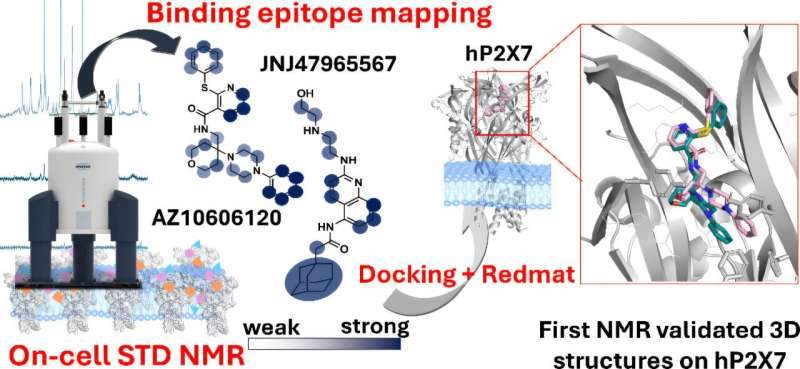An international research team has introduced a groundbreaking technique that could significantly enhance the speed of drug design targeting ion channels. This innovative approach, developed by the Institute of Chemical Research—a collaborative center between the University of Seville and the Spanish National Research Council—aims to address various diseases linked to these essential cell membrane proteins. The findings were published on November 15, 2025, in the Journal of the American Chemical Society.
Ion channels play a pivotal role in numerous physiological processes, including nerve transmission and muscle contraction. Dysfunction in these channels is associated with a range of disorders, from psychiatric conditions to different types of cancer. The research team, which includes scientists from the University of East Anglia and the Quadram Institute in the United Kingdom, has developed a technique that allows for the study of drug interactions with these proteins in living cells, providing more relevant biological data.
Traditionally, studying drug interactions with ion channels involved isolating these proteins—a process that could alter their behavior and is technically complex. The new method, based on nuclear magnetic resonance (NMR), simplifies this process. According to Jesús Angulo, a researcher at the Institute of Chemical Research, “Our technique allows us to study these interactions in living cells, which provides more biologically relevant information.” The experiments can now be conducted in under an hour, making the process faster, more cost-effective, and significantly simpler by eliminating complex preliminary procedures.
This advancement is expected to revolutionize structure-activity studies, which examine how the chemical structure of a molecule correlates with its pharmacological effects. Leanne Stokes from the University of East Anglia emphasized the broad implications, stating, “Our technique could significantly accelerate the development of drugs that target ion channels and other membrane proteins, opening up new research possibilities in multiple areas, from neurological and cardiovascular diseases to metabolic and oncological diseases.”
The technique has been successfully tested on P2X7 receptors, which are linked to therapeutic targets for depression, certain autism spectrum disorders, and specific cancer types. Serena Monaco, a researcher at the Quadram Institute, noted, “We have shown that we can identify, on living cells, which parts of the drug interact with the protein, allowing us to optimize these interactions; this is essential information for developing more effective and specific drugs.”
Furthermore, the research team utilized advanced software developed at IIQ-CSIC-US to integrate their experimental data with three-dimensional models of drug-receptor binding created through bioinformatics. This integration allows for the validation of which computer-generated models accurately reflect laboratory observations.
Angulo likens the interaction between a drug and a protein to a lock and key, explaining, “The membrane protein is the lock, and our key is the drug. But we not only have to find the right key; we also have to figure out how to insert it so that it opens more effectively.” He concluded, “Bioinformatic models are essential to designing new drugs. Being able to validate three-dimensional computer models on living cells represents a new paradigm in the development of drugs targeting these proteins.”
This research marks a significant step forward in pharmacological studies, with the potential to expedite the discovery of new therapies for a variety of diseases. The implications of this technique extend well beyond ion channel research, promising to enhance drug development processes across multiple medical fields.



































































